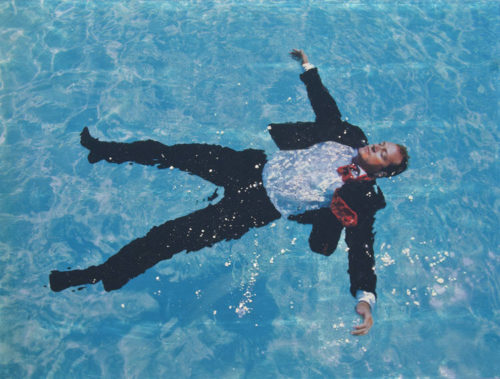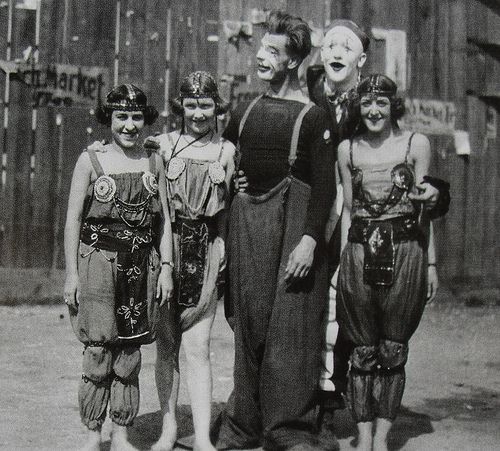
Giotto ( St Francis and the fFaming Chariot, 1299)
“There is no such thing as criticism, there is only history. What usually is passed off as criticism, the things you find in architecture magazines, is produced by architects, who frankly are bad historians. As for your concern for what should be the subject of criticism, let me propose that history is not about objects, but instead is about men, about human civilization. What should interest the historian are the cycles of architectural activity and the problem of how a work of architecture fits in its own time. To do otherwise is to impose one’s own way of seeing on architectural history.”
Manfredo Tafuri (Interview with Richard Ingersoll, 1986)
“One of the greatest problems of our own times is dealing with the uncontrollable acceleration of time, a process that began with 19th-century industrializations; it keeps continually disposing of things in expectation of the future, of the next thing. All avant-garde movements were in fact based on the continual destruction of preceding works in order to go on to something new. Implicit in this is the murder of the future. The program of the “modern” artist was always to anticipate the next thing. It’s just like when you see a “coming attraction” ad for a film, essentially you have already consumed the film and the event of going to see the film is predictably disappointing and makes you anxious for something new.”
Manfredo Tafuri (ibid)
“In that sense, commercial cinema is the totalitarian social space par excellance.”
Raul Ruiz (Poetics of Cinema)
“Every work of art is an uncommitted crime.”
Adorno (Minima Moralia)
The Corona event has, among other things, served to reveal the architecture of class sedimentation in western society, both symbolically, psychologically, and literally. It is also worth looking at this as an expression of ruling class desires and fears, and in terms of the Spectacle, the atrophy of reason and logic, and the disenchantment of Nature.

Stephen Shore, photography.
“By some technological sleight of hand, machine-mediated perception now is inextricable from your psychological, economic, visceral, and ideological dispensations. Spectatorship, as the fusion and development of the cultural, industrial, economic, and psychological, quickly gained a handhold on human fate and then became decisive.”
Jonathan Beller (The Cinematic Mode of Production)
I have a lot of discussion with friends of late regarding idea of instrumental reason. And by extension Adorno and Horkheimer’s Dialectic Of Enlightement. And I wanted to look at these ideas as well as Beller’s first book, which is pretty essential reading I think, and then also how the Corona quarantine is becoming allegory. That transformation into allegory entails something linked to the massive cognitive damage in most of the advanced west. There are two allegories, actually, I think. One is political and one is something more illusive. But more on that below.
Now Beller posits a new production of value that is photography — and includes cinema and the internet. The capture of the sensorium as he puts it. And he quotes Debord…from Society of the Spectacle.
“The alienation of the spectator to the profit of the contemplated object (which is the result of his own unconscious activity) is expressed in the following way: the more he contemplates the less he lives; the more he accepts recognizing himself in the dominant images of need, the less he understands his own existence and his own desires. The externality of the spectacle in relation to the active man appears in the fact that his own gestures are no longer his but those of another who represents them to him. This is why the spectator feels at home nowhere, because the spectacle is everywhere.”

Diego Garvinese
Our gestures are not our own, written forty some years ago. Fifty actually. Today those gestures are still not our own but they have been amputated and made sclerotic. Implicit in all of this are the various and myriad ways that Capital has manufactured a sort of substitute unconscious. Beller calls it the unconscious of the unconscious. In a chapter devoted to Lacan (largely) there is an observation about the ‘shattering of the subject’s continuity’ — and “Images that supplant language as the discourse of the Other (“the world speaks itself in its own terms”) reveal two related tendencies—the crisis of language as the arbiter of expressivity and the simultaneous fading of “the Other” (“such a world is defined without us”), since images are not really a discourse at all.” (Beller, ibid)
On a recent podcast Molly Klein and Michael Petrucelli and I were discussing House of Cards. And I noted the opening sequence in which Washington DC is viewed without people. A world defined without us. Continuity is now nearly entirely made up of screen images and information that no matter the disconnectedness of the ideas is viewed as a representation of reality. Only reality has shrivelled in importance. Its lack of conventional continuity passes without comment. The new continuity is a new digital magic thinking. But it is one of absolute disenchantment. The aesthetics of the screen reality is as dead as the emotional inner life of the subject. It is also the mirror, or prism, really, through which the desires of the ruling class can be viewed.

Heinrich Lempertz, photography.
“Starting from the analysis of the typical character of labor, it is possible to reconstruct towards the surface of the system the progressive stratifications and determinations of a totality which must, however, be traced back to its base, i.e., to that unequal exchange which contaminates the world of commodities and which reveals the class violence, the elementary mechanism of exploitation, and the dominance of dead labor over living labor.”
Salvatore Veca (Value, Labor, and the Critique of Political Economy)
The role of what has come to be called ‘instrumental reason’ is another aspect of the aesthetics of deadness. Now whether one agrees with the timeline in Dialectic of Enlightenment, the argument is largely unchanged. Kant was the first (or, likely one of the first) to critique instrumental/scientific reason. J. M. Bernstein wrote “.Kant understood that if Newton’s new mathematical physics –uniting terrestrial and celestial mechanics under one uniform set of causal laws – was taken as total, then all human freedom and all moral norms would be dissolved within the determinism of mechanical nature.” (Instrumental Reason)
The key point for Kant was that scientific reason was but one form of reason –and more to the point was actively constituting its object (world, what the senses provided) by imposing a template or form that preceded any sensory input.

Nicholas Party
“Reason injects the norm of universality into the deliberative considerations through which reasons for action are formed. While theoretical and practical reason are both products of human spontaneity, theoretical reason involves a third-person, spectator point of view, while practical reason institutes a first-person, agent perspective; by itself, this provides a good reason for considering reason as at least dual – irreducibly theoretical and practical – if not plural in character”.
J.M. Bernstein (ibid)
Hegel, most notably, recognized that Kant was only sort of kicking the metaphysical can down the road a bit. That the universal law was only another form of theoretical reason tricked out in new attire (very practical attire).
“The effective triumph of instrumental reason begins with the hegemony of modern science over human knowing – any claimed cognition that cannot be further translated into science is eliminated from the cognitive canon – leaving instrumental reason to practically install itself through capital’s insistent effort to recruit and regiment the whole of social practice to its ends.”
J.M. Bernstein (ibid)

Eric Zener
“In the unfolding of capitalist rationality, irrationality becomes reason.”
Herbert Marcuse (Industrialization and Capitalism in the Work of Max Weber)
The short version of Horkheimer and Adorno’s take was that abstract universality – which never changes (or does it in some cases for some thinkers`?) devours sensuous particularity and concrete singularity (per Bernstein)…and they imagine the unity of science as only another version of mythic origin stories (see Ka, by Roberto Calasso….because the Indian/Hindu mythology is so much more cinematic than the greeks, and because I think Calasso knows this and write it as, essentially, a screenplay). Now there is reason to take a bit of issue with this (the Adorno and Horkheimer), because I think its not really as precise as it might be…genealogically speaking.
“Although it will require modification, we can take instrumental rationality to mean simply means-end rationality, the form of reason required to calculate the necessary and potentially most efficient means for realizing stipulated ends. Critical Theory argues that capital recruits the whole of society to its end of wealth creation – increased capital – by implementing the demands of instrumental reason throughout all the major institutions of society while delegitimizing all competing forms of rational reflection, rational action, and rational interaction. Once we remind ourselves that wealth creation is only a means, an instrument for realizing the satisfaction of human needs, then the societal actualization of instrumental reason, and its virtual hegemony over competing models of rationality, projects a society in which all meaningful human ends disappear.”
J. M. Bernstein (ibid)

Book of Magic and Demons, 1921, based on Persian astrology. Artist unknown.
“Reason has degenerated because it was the ideological projection of a false universality which now shows the autonomy of the subject to have been an illusion. The collapse of reason and the collapse of individuality are one and the same.”
Max Horkheimer (The End of Reason, 1941)
The eclipse or subsumption of the actual, the real, in both myth and mathematical formula, creates the impression that the new is really the old…predetermined. It reduces the different to the same. Or…more importantly for understanding, it means repetition is required for belief. Or, exchange value in a sense. In a later sense.
The key passage, and Bernstein quotes it, and it is well known, is …
“The concept, usually defined as the unity of the features of what it subsumes, was rather, from the first, a product of dialectical thinking, in which each thing is what it is only by becoming what it is not. This was the primal form of the objectifying definition, in which concept and thing became separate …The gods cannot take away fear from human beings, the petrified cries of whom they bear as their names. Humans believe themselves free of fear when there is no longer anything unknown. This has determined the path of demythologization, of enlightenment, which equates the living with the nonliving as myth had equated the nonliving with the living. Enlightenment is mythical fear radicalized. The pure immanence of positivism, its ultimate product, is nothing other than a form of universal taboo. Nothing is allowed to remain outside, since the mere idea of the “outside” is the real source of fear.”
Horkheimer and Adorno (Dialectic of Enlightenment)

Il Lee
Now, Bernstein after quoting that paragraph writes…” Horkheimer and Adorno take myth to have been originally equal parts mimetic responsiveness, narration, and (pseudo-)explanation.Myth finally fails because, while it succeeds in making the unfamiliar familiar, as in the cycle of seasons, it does not enable practical control. “ And this is what interests me here. I feel that whatever liberties Adorno and Horkheimer took with the defining of the Enlightenment, the issues that matter and that Adorno in particular saw prophetically, are the implications of mimesis and narration for humankind, and the disintegration of those capabilities through Capital. The question, though, at this point is why does the this process exhibit such durability? And the answer is partly capitalism. Chicken and egg sort of matters here, too, but I will get back to that. The point is that instrumental or scientific reason, the cataloguing kind, takes an object, a rock, and places it within a category of rock, then further classifies the kind of rock or mineral, and then further still. The process is of reiteration, or the turning of the sensuous into something repeatable. Something that will be repeated and recognized and then become universal. Within this, of course, is the character of predictability. One might argue there is nothing wrong with this, and I suspect, actually, Adorno would agree. Not per se anyway. This is how science works, it observes, describes, and tests. The problem, though, was that social and economic forces shifted the focus from knowledge of the world to control of the world. And, for Adorno and Horkheimer, fear. Man’s fear of the unknown.

Cody Bratt, photography.
This is where psychoanalysis enters. Joel Whitebook writes…“Where the domination of nature in general—as opposed to economic exploitation and class struggle—became the overarching theme of the new philosophy of history, the idea of the domination of inner nature provided the specific link through which Horkheimer and Adorno incorporated Freud into their new theory.” (Psychoanalysis and Critical Theory).
Adorno had a pessimistic view of the working class in its ability to create revolution. He also strongly defended Marxist class analysis in the debates within the German Sociological Association, and in public debates in Germany in the 30s. But he also was traumatized and disappointed.
I will quote Joel Whitebook again..
“By reading Marx’s theory of exchange back into prehistory, Horkheimer and Adorno sought to integrate his economic theory with Freudian anthropology. They maintained that the law of equivalence—the principle that everything that happens must pay for having happened—governed mythical thought, and they saw the capitalist principle of exchange as the latest and most complete instantiation of the law of equivalence. The practice of sacrifice, which aims at mitigating the law’s effects, follows from it. For example, the sacrifice that our so-called primitive ancestors performed to placate the gods after a successful hunting expedition constituted an attempt to control the price they would have to pay for their good fortune by offering an advanced propitiatory payment.”(ibid)

Lewis Baltz, photography (Sites of Technology, 1989).
The chapter on The Odyssey in Dialectic of Enlightenment is Adorno’s vision of the Enlightenment’s attempt to escape the payment. Odysseus tries to avoid the inevitable law of equivalence. The point is not really the choice of Homer to illustrate this so much as it is the graphing out of the mechanisms of sacrifice. Rene Girard has done this in some detail since. Odysseus sacrifices his instinctual self, or part of it anyway. But this denial of his nature, or for Adorno and Horkheimer, the core of his civilizing rationality, there is a residue…as they put it…of “the germ cell of proliferating mythic irrationality.” Now even if one rejects Freudian anthropology, or Freud in general, the idea of sacrifice looms large over the next several hundreds of years. The domination of nature begins with the domination of inner life per sacrifice. The question (or one of them) that haunts this metahistory (if that is what it is) is the nature and quality of the fear that drove this project of domination. What one might take note of (and oddly this was mentioned in the recent limited SciFi series Devs) was that early man, the cave painters at Lascaux and elsewhere, were living in those caves (or using them, painting in them) for four or five thousand years. Or more. The fear that gradually helped develop a text or alphabet, a language, and more stable social conditions was very gradual indeed. So was it in fact fear? Was learning certain communicative technologies really a direct assist in keeping sabre tooth tigers at bay? Essentially little changed for thousands of years. It points to the accelerated quality of late capitalism in every respect. Still, those questions remain unanswered.
And here I want to return to Beller. And to the Corona event.
“The separation and expropriation of labor from the laborer, the alienation of labor, is a precursor to the separation and expropriation of vision from the spectator.”
Jonathan Beller (ibid)

Marc Trujillo (Kennedy International Airport, 2015).
In the most recent podcast with Guy Zimmerman, the role of social media was discussed and Guy made the quite cogent observation that this generation (and I would say the previous two) have been already fully terrorized. The alienated vision runs alongside a digital commons that is something akin to a lynch mob or Klan meeting. The instrumental thought that favors calculation is one whose primary reference point is money. The entire instrumental form of thought is tied into money. I am not sure the cave dweller calculated in the same way. And here I suspect the Frankfurt metahistory is most flawed. It was the emergence of capitalism, of trade, that lent reason a particularly imperialist bent, as it were. But even Kant noticed this. And certainly since the industrial revolution the logic of calculation follows Marx’s notion of the flow of money. There is a gradual increase in abstraction under Capital. And now with the digital cyber universe the abstraction has taken on new qualities.
Commodification is a kind an expression of exchange value. The ultimate law of equivalency.
“As shifts in the quantity of abstraction precipitate shifts in its qualities—for example, in the sequences Colonialism, Imperialism, Globalization, or Impressionism, Cubism, Neo-Realism, Virtuality, or Cinema, Video, Computer—shifts in the intensity of practices of abstraction coincide with different modes of perception.”
Jonathan Beller (ibid)
The punch line to the above paragraph is cinema. The reign of the cinematic. As Beller notes…“…cinema becomes a new type of calculative function for regulating both individual and social relations.”

Circus performers, 1920s. Photographer unknown.
Now there is an aspect here, rather illusive and difficult to articulate, partly because I have not quite grasped what I am trying to express. But, when Beller is quoting George Simmel (whose importance is really negelected) and discussing Simmel’s ideas on money, there is something lurking at the edges of this that I want to try to discover..for lack of a better word. And it not too far away from Deleuze’s ideas on cinema, too (to which Beller devotes some attention). And this ‘something’ is the migration of writing, theatre writing really, but it could be cinematic, too, from representational plots and stories, formulas, predictable, to that which exactly strategizes a refusal to calculation. I recently said, and I have suggested this in the past, that the playwright creates the play. And that theatre is a form of thought. Cinema rarely is, and maybe never is, but at times it approaches this (Dryer, Fassbiner, Bresson, Mizaguchi, Antonioni, et al). And then the actors perform this thought. They realize it, in a transitory way, a fleeting enactment or revealing of something ineffable, in a ritual empty space. And in the interstices of this relationship is the play ‘thinking itself’. As itself. And it is communal whether the audience knows it or not. And this idea is tied into Simmel on money, and into Beller, and it most importantly tied into exchange value.
“It is half the art of storytelling to keep a story free from explanation as one reproduces it.” What Benjamin understood as “information”— that is, events, “shot through with explanation”—the rise of which coincides with the fall of the story, the decline of experience, and the dawning of full modernity, is now recognizable as a predominant feature of new forms of mediation in the capitalist economy.”
Jonathan Beller (ibid)

Donald Judd
There is in the digital paradigm something that encourages the decline of experience. And here is where mimesis, as Adorno theorized it, has to be understood. (and again, read Robert Hullot-Kentor’s book Things Beyond Resemblence, and in particular his evisceration of Jameson discussing mimesis and Adorno. But it is also a useful tool to understand this most recondite and dense of Adorno’s ideas).
The play thinking itself happens when the form of thought that is theatre (which privileges text I believe) , in the speaking aloud of memorized text, in the furtherance of a story with allegorical dimensions, and in which an audience, a live audience, watches and listens with a focused attention. The play then exceeds the various intentions, it is more than the sum of its parts. Beller has written that media bytes are thinking money. He means something a bit different, but there is an echo of mimetic truth here, too. For mimesis is both empathic physical and biological responses to an object or event, and it is a reliving of that empathy as something else. It is alchemy. The play is recreated mimetically in a variety of registers by a variety of people. And that in turn signals its thought.
“Aura, then, is to ideology as simulacrum is to spectacle. Aura is of the subject. In the simulacrum, the particular content of a message, its use value, is converted into nothing but pure exchange-value.”
Jonathan Beller (ibid)

Ridley Howard
But the contemporary audience is loathe to visit a theatre and watch a play — and this well before the Corona event. It was the difficulty of moving about big cities, the cost and the stress. Anxiety saturated attention. Now of course the anxiety is further pathologized and medicalized and people (well the affluent anyway) seem to enjoy wearing masks. And as a brief digression the appeal (apparently, to many) of wearing masks feels oddly unsurprising. Venetian carnival masks, Sri Lankan devil and disease masks, Victorian funeral masks …even New Orleans Mardi Gras masks…all may find themselves reproduced as Corona-masks. That the ruling class and haute bourgeoisie find the immiseration of millions of Americans as something like carnival should hardly be unexpected.But I personally do not imagine masks are going away anytime soon. I expect them to grow and extend to all areas of daily life.
“The aura is the living tissue of now absent attention and social practices that congeal around the work and continue to exercise a palpable effect despite the fact that they are invisible. The fetish also marks the independent will of objects, their monstrous indifference to our puny desire, their sentience, that is the registration of their animation in circulation—their cult value. But the fetish marks the invisible relations capital that haunt the object while the aura marks the now absent uses and properties that make the object what it is. “
Jonathan Beller (ibid)

Maya Eizin Öijer
The pandemic is fetishized and much like the climate alarmism associated with Greta and The Guardian paper, there is a curious fetishized and cultic response in much of the population. And it is the latent masochism of the already terrorized. It also feels like a faint cry of Puritan angst, a call to piety. This is a very American sensibility, this punitive moralism. So one has a declining of experience, a cognitive deficit born of screen damage and habituation, and the psychic violence of social media which is based on paradigms of negative emotions. And the deeply imbued individuality that most Americans associate with frontiersmen and gunfighters. The morality of the Corona gunfighter, the unforgiving Puritan, but who now exhibit an impaired rationality, a rationality already instrumentalized to a pathological degree.
Part of this pathologized version of the instrumental is tied into the marketed science of the contemporary West. The corporatization of research, the profit driven motivations for a counterfeit altruism. This is far less evident in the working class — the blue collar underclass, who today are seen and stigmatized as zombies or viruses themselves. The ruling class dream film scripts, too, of course. And they valorize a sense of narrative that always finds solutions from what they own. Science is often today that which designs surveillance equipment. The instrumental reason of the attention economy is no longer quite the same one operative mid 20th century, or earlier during the Industrial Revolution. The digitalized reason of hyper reification is one that has lost the last small vestiges of moral thought.

Yamma Raksaya mask, Sri Lanka 1950s
“The aura for Benjamin was that quality that distinguishes the artwork as something singular, a quality of uniqueness that originally distinguished the artwork as a creation embedded within a traditional context of re- ligious ritual. In such a context the auratic work of art can be venerated only at a distance, with the sobriety that is due to any cultic object: “The artwork’s auratic mode of existence is never entirely severed from its ritual function,”…”
Peter Gordan (Adorno and Existence)
Digression (but not)… here is a brief overview of Sinhalese black magic rituals. Courtesy of Second Face, the Museum of Cultural Masks. “The masked dance of Sri Lanka developed from shamanic healing and purification rituals, and split along two lines. The first, Yakun Natima, is the healing dance performed by a shaman. Each demon (yakku) represents a specific disease or ailment, and to invoke the demon, the shaman wears a mask depicting the symptoms or symbols of the disease. When performing as a group, a character known as Kola Sanni Yakka, who is a kind of amalgamation of all diseases, presides over the demons.
The second line, Kolam Natima is a storytelling dance drama involving 40 masked characters of very diverse types. The story originates in a myth of a pregnant Sinhalese queen who develops a craving to see masked dances. She begs her husband, the king, to arrange it, but he knows of no such dances. At his request, the god Sekkria, one of the four guardian gods, carves the masks and teaches the people how to perform the dance. They perform for the royal audience, and the baby is consequently born strong and healthy. The stories told with the masks are not a single cohesive narrative, but a series of stories that merge Sinhalese folk traditions with Buddhist Jataka stories, which tell of the former lives of the Buddha.
A Kolam Natima performance begins with ritual addresses to gods and the Buddha. What follows is a prologue showing brief stock, mostly comical, scenes from traditional Sri Lankan society. Finally, the king and the queen in very large masks enter with their retinue, whence they watch the dance. The performance ends with the dance, typically involving Gara demons, Nagas (snake demons) and the Garuda (a Naga-eating god-bird) who were eventually reconciled by the Buddha. The performance is intended to purify the village and to spread prosperity.”
Now, the rituals described above go a long ways to explaining the parameters of mimesis. Lee Kissman once described to me an Easter play he saw in a smallish Mexican village in the mountains I believe. At the end a little village girl carried a white pigeon up a ladder behind a statue of Jesus and at the end of the feast of the Ascesion, she released the bird. The audience saw, of course, the white pigeon fly out of the head of christ. Now thats theatre.

Hilo Chen
“This anxiety for the future represents a secularization of the Book of the Apocalypse—things only have meaning in relation to the eschatology of their final goal. This is the basic parameter. This continual destruction of the present contributes to the nihilism of our times. ( ) As to how to select buildings that are worthy of history, it is the problem and not the object that concerns the historian. The works selected are irrelevant on their own and only have meaning in the way they relate to the problem. If you look back to the fifties, you’d see that two of the most published architects were Oscar Niemeyer and Kenzo Tange, architects who have not enjoyed continued prominence in successive histories. They were swept up in the news in an ephemeral notoriety, but this exposure did not assure them a place in history.
The historian has to abandon his prejudices about the quality of the work in order to deal with the problem behind it. The work of Eisenman and Hejduk was much more interesting 10 years ago than it is today because it showed a curious problem of Americans looking to Europe, and what they chose to look at was an “Americanized” Europe—Eisenman’s Terragni is an architecture without human history. Using the theoretical precepts of Chomsky and Lévi-Strauss (rather than the more characteristic American pragmatism), they succeeded in emptying their historic sources of the human subject.”
Tafuri (ibid)
The emptying of the human. That is the other problem here. Mimesis is the *human* empathic.

Pacino di Bonaguida, The Ascension of Christ, he Laudario of Sant’Agnese detail. 1340
As a side bar note the above detail is by Pacino di Bonaguida. A name not many people know and yet he is credited with being a primary force that set in motion the Renaissance. But Di Bonaguida painted mostly wooden panels, and illustrated manuscripts. He reproduces very poorly in contemporary platforms. But he is a massively inspired artist and it is worth looking for the Chiarito Tabernacle, for like the Giotto (I think I have mentioned before my love for Giotto) you see stunningly modern looking work. But also simply deep and profound work.
But to return to other matters. The evolution of instrumental or scientific thinking is complex and whether one accepts the metahistory of Adorno and Horkheimer doesn’t finally matter. What matters is the state of contemporary consciousness. Beller is very important to read, I think. I have barely scratched the surface of Cinematic Mode of Production. But this idea of the depletion of the human, the loss of primary experience, and a reliance on an adulterated positivism suggests to Beller (and certainly to me) the importance of art.
“Thus personality and genius are not only hermeneutic mechanisms for the interpretation of modern artworks, but compensatory mechanisms imputing human characteristics to a world where these characteristics are disappearing among the general population in the face of the market. Like the experience of Everyman in the Coen Brothers’ Capital Cinema, the personal touch, unaccommodated by massive, visual mediation (massively intending, widely circulating, institutionally enabled, capitalized objects) is doomed by capital to extinction.”
Jonathan Beller (ibid)

Abigail Lane
One might have wished for seventy other better films to use as an example, but never mind. Point taken. Beller says simulation is the intensification of social opacity. Then I would say CGI is the redacted opaque, a blackening of the last residue of human touch. The Spectacle (says Debord) is the intentional concrete manufacture of alientation. The Corona lockdown and attendant absurdities is the social expression of this manufacturing process.
The medical (sic) masks are a diluted masquerade, a fortieth dupe of of Poe or de Ghelderode — without the humanity. {and here I should add that cinematic representations of masked balls are too many to even begin to list, but the sexual and sexually perverse figure prominently in most of them}.
A final thought on cinematic taste. Much as I admire Beller, he needs a course in film appreciation. After the Cohn Brothers he cites Wim Wenders. And I think this is where I will advocate for a re reading of the Cahier du Cinema critics. And even Sight & Sound in their more overtly communist period. Andrew Sarris’ book The American Cinema, which came out in 74, was mostly stolen material from the French but it was still useful (Sarris later become a mush brained idiot), and his pantheon (of American directors) included Ford, Chaplin, Keaton, Ophuls, Hawks, Hitchcock, Lang, Von Sternberg, Welles, and a couple others…Renoir…Murnau. Anyway, this remains a rather startlingly good list (and I hate lists). His next group were perhaps just as good, and a bit sexier actually (Fuller, Siegel, Sirk, Siodmak, Preston Sturgis, et al). I carried a dog eared copy of that book around NYC for a decade. But then in those days it was normal to see three and four films a day.
But from the French critics, from Sight & Sound, and other serious and usually political writers of that time, I came to a far deeper understanding of film that what one gets at film school these days. Who screens Skolimowski now? Or Losey? Or the films of the Brazilian New Wave (Cinema Nova, with the genius of Nelson Pereira dos Santos, but also Joaquim Pedro de Andrade). Those Cahier critics saw past the ideology at work and sensed the importance of form. The opinions of the film matter far less than the quality and radicalness of the form.
The emptying of the human, and the positivist apologia for a new authoritarianism.
New podcasts are up each week at https://soundcloud.com/aestheticresistance
To donate …use the paypal button at the top of the page. Thanks.

What do you ask for when you try to liquidate your bond fund? A redemption.
Judge Holden may be the greatest representation of instrumental thinking.
A few years ago there were Newsweek articles about measuring “inspiration” and you’d hear guys talking like “now that we can measure it it’s an interesting concept”. Sad, perhaps sentience will take up residence in objects once it’s fled the human completely.
Excellent piece again John they always take some rereading but off the cuff have you read any Merwin? He seems to have been the recent poet working at your ‘ineffable frontier; the beginning of your piece brought this to mind:
THE ARTISAN WORLD
It turns but does not try to remember
it does not precede or follow
obey or not obey
it is not answering a question
it arrives knowing without knowledge
it makes the pieces one by one in the dark
there is always enough dark
before time comes with the locusts
the insects of comparison the improvers
with their many legs in the dazzling air
makers of multiplication and series
they never touch what is awake here
and is not waiting nor asking nor fashioned
but is one with the uneven current of breathing
with the silence untouched by the rush of noise
Also considering architecture have you looked at the work of Chris Alexander? There’s something in a ‘coincidence of diagnosis’ for want of a better descriptive between your pieces and Alexander and Merwin. All arriving at similar conclusions via very different means.
Merwin is terrific. The Miner’s Pale Children, Lice. https://www.newyorker.com/magazine/2017/09/18/the-ascetic-insight-of-w-s-merwin
Yes I’ve spent lockdown immersed in his oeuvre – it’s quite a lot of oeuvre. You might like this http://www.natureoforder.com/overview.htm
Thanks for the stimulating articles.
Hello John,
In-depth and, for sure, rigorously surgery of
the culture & ourselves. Sharp remarks re. Adorno’s
Dialectic of Enlightment…
The world(s) is fractal, strangely recursive, and
chaotic at its infernal cores (Blake). To shelter
ourselves from its flames and fangy dreads, er try
building systems of order- and, consequently, prediction, the
latter being a necessary condition for the controls that
we hope will lead to comfort & safety. The sick, intelligent
protagonist in Notes From Underground rejects this Crystal
Palace and embraces the sacred irational. Perhaps, we should engage
a dynamic balance between our devils & angels, instead.
From the former (Scientia) perspective, we may welcome proximity
sensors in our steering wheel that alert our car’s microprocessor
brain when our hand’s grip is absent from the steering wheel during
a concurrent failure of the automobile’s cruise control instrumentation.
But, from the free and always partially irrational or transrational
intentional agent within us, we are repelled by the machine totalizing
that considers the self as a “human factor” – just another system part
that needs to be predicted & controlled, just as a spark plug or
valve. Thus, the irrational reasonableness (Marcuse) of all kinds of
social control, in particular at work. Thus, the high culture aroma of
the fast speed autobahn, with measured exit ramps leading to
death camps.
Regino
On Reading Emptying the Human
Followed by Listening to Podcast # 11
Good evening, John,
A small fear that i may be shamed-tagged
as hyperbolic and ridiculous won’t prevent me
from describing my quasi-ecstatic- though
reverently unsettling – response to Podcast # 11.
You guys truly exceled. It felt like an almost
sacramental stream of revelations.
Your sayings with respect to the surplus unconscious
open up many gardens of reflection. Plus your discourses
on shaming & the formation of alienated identities to fit
the class structured Machine of domination and control.
I must apologize for having drifted, at small intervals
during the communion, to the early 70’s in Miami & buying
near the then under construction Omni Mall my first TI
scientific calculator so that I could minimally prepare for
my first engineering courses, which I started with math and
newtonian physics. It felt, in my reverie, like a very continuous
and dirty river joining that moment and the uber-dystopic
technocracy of today. Thank-you,
Regino
Today’s corona-panic attendant absurdity for me was being informed by my health care provider that I can now get a “virtual physical” exam. The cinematic reference for this tidbit would probably be the head exploding scene in “Scanners”.
thats so perfect. Scanners as Universal health care.